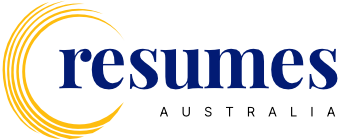
Teachers seeking to improve their skills in literacy and numeracy will find valuable insights in this article. The importance of these skills for educators is discussed, along with practical strategies for enhancing teaching techniques.
Tips are provided on how to demonstrate literacy and numeracy skills in a job application, including showcasing relevant experience and citing specific examples of success. This article offers something for both experienced educators and newcomers to the field.
Why are Literacy and Numeracy Important for Teachers?
For a teacher, having strong literacy and numeracy skills is essential for effectively engaging students in the curriculum, assessing their progress, and creating a supportive classroom environment that promotes learning and development. These foundational skills not only help teachers impart knowledge effectively but also enable them to accurately assess students’ understanding and progress.
Effective communication skills assist teachers in conveying information clearly, while critical thinking abilities support problem-solving and the adaptation of teaching strategies to accommodate diverse learning styles. Strong leadership qualities enable teachers to lead by example, motivating students to strive for excellence.
Collaborative teamwork among educators fosters an inclusive learning environment where students feel supported and encouraged to succeed.
Examples of Incorporating Literacy in Teaching
Integrating literacy skills into teaching can manifest in different ways, such as developing interactive lesson plans that incorporate reading and writing activities, as well as using a variety of instructional materials and literacy assessments to assess student progress and adjust instruction as needed.
Integrating Reading and Writing into Lesson Plans
Incorporating reading and writing activities into lesson plans can significantly enhance student engagement and promote better learning outcomes by providing opportunities for students to develop their literacy skills in a meaningful context.
By incorporating a variety of teaching strategies such as guided reading, literary circles, and journaling, educators can offer students a diverse range of experiences that cater to different learning styles.
Utilizing a mix of instructional materials like newspapers, novels, and online articles can create a dynamic learning environment that captures students’ interests and fosters a deeper understanding of text.
Pairing reading with writing tasks, such as summarizing readings or creating responses, encourages students to think critically and express themselves creatively, enhancing their overall literacy skills.
Using Visual Aids for Numeracy Concepts
The use of visual aids in explaining numeracy concepts can help make abstract mathematical ideas more tangible and easier for students to grasp, thereby improving their comprehension and engagement in the classroom.
Integrating educational technology into the instruction of numeracy concepts can further enrich the learning process by offering interactive and captivating learning opportunities for students. By leveraging tools like educational apps, interactive whiteboards, and online simulations, educators can establish dynamic and immersive learning settings that accommodate various learning preferences.
This diversity in instructional approaches not only facilitates students’ comprehension of numerical concepts but also encourages active involvement and critical thinking skills, fostering a deeper understanding of mathematical principles.
Strategies for Teaching Literacy and Numeracy
Implementing effective strategies for teaching literacy and numeracy is crucial for addressing the diverse needs of students and fostering a student-centered learning environment that facilitates their academic growth and development.
Differentiated Instruction for Diverse Learners
The implementation of differentiated instruction enables teachers to address the diverse learning needs of students by providing appropriate literacy and numeracy resources and support for individual progress and development.
Embracing differentiated instruction allows educators to effectively cater to the unique learning styles, abilities, and interests within their classroom. This approach promotes inclusivity and support for each student in their educational journey. The use of varied educational resources gives the power to teachers to create engaging lesson plans that connect with a range of learners, ultimately improving comprehension and retention. Employing a variety of assessments helps educators identify areas where students may need extra assistance, facilitating targeted interventions that foster academic growth and achievement among diverse learners.
Interactive and Hands-On Activities
Incorporating interactive and hands-on activities can enhance students’ understanding and retention of literacy and numeracy concepts, creating a dynamic learning environment that encourages active participation and critical thinking skills. Educational technology like interactive whiteboards, online educational games, and educational apps can be used to create engaging learning experiences that accommodate different learning styles.
For instance, teachers can utilize interactive story-writing platforms to motivate students to enhance their literacy skills through creating stories with multimedia elements. Similarly, maths-based escape room challenges or virtual maths manipulatives can help make numeracy concepts more tangible and engaging for students.
How to Showcase Your Literacy and Numeracy Skills in a Job Application
Effectively highlighting literacy and numeracy skills in a job application involves showcasing relevant experience, qualifications, and educational background. It also requires demonstrating commitment to professional development, leadership, and teamwork in fostering student success.
Highlighting Relevant Experience and Training
When discussing literacy and numeracy skills in a teacher’s job application, it is important to focus on relevant teaching experience, qualifications, and training that demonstrate dedication, motivation, and mentorship abilities in supporting student learning and academic achievement.
Illustrate a commitment to professional growth by providing specific examples of successful teaching experiences where innovative strategies were used to improve literacy and numeracy skills. Mention any specialized training programs attended to enhance

0 Comments